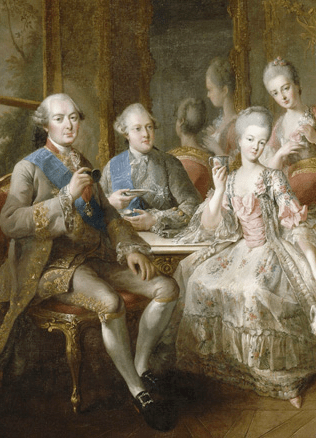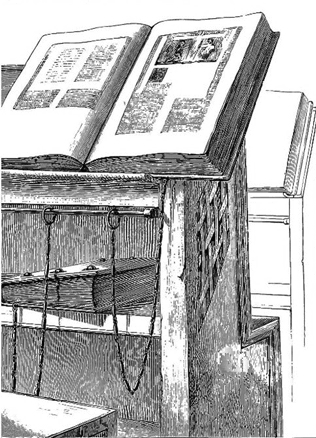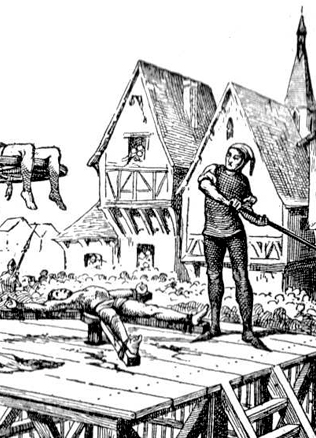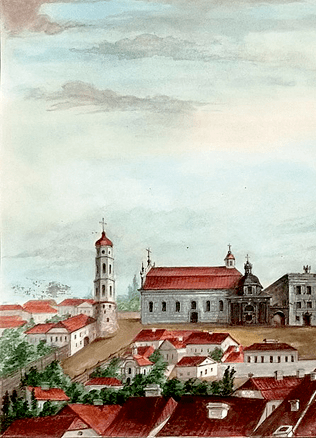A Foot Settlement: How to Create a City
Though there were no cities in the first half of the 13th century in Lithuania, the hill forts together with the nearby settlements established near them from the 11th-14th century that have been examined by archaeologists show that a number of people of various social classes were concentrated (or brought to) some of settlements, including aristocrats and simple peasants, as well as warriors. There were artisans of various trades that lived and worked here for the society, including blacksmiths, jewellers, and pottery makers. The fortified foot settlement and open settlement at the foot of the hill were the two main places for concentrations of people, which is where traces have been found of artisan workshops and houses. Currently we know of two early pre-Magdeburg Lithuanian cities of the second half of the 13th century to the 14th century, Kernavė and Vilnius. At the end of the 14th century, Naujieji Trakai began to expand, and in the 15th century Kaunas followed.
A Medieval Fortress City
The following is a short but comprehensive description of the development of Kernavė in the 13th and 14th centuries. The Kernavė of the second half of the 13th century, the times of Lithuanian ruler Traidenis, turned into a powerful defensive complex of several castles that were significant for the nation. However, in the middle of the 13th century, Kernavė was still a weak fortress and more like a fortified settlement at the base of Aukuro (Sacrificial Altar) Hill and Mindaugo Sosto (Mindaugas’ Throne) Hill. The unfortified foot settlement on Pilies (Castle’s) Hill reminded one more of the allodial land of a local noble. During the rule of Traidenis, they began to strengthen Kernavė both militarily as well as economically. New fortifications were put up, and old ones were expanded. New ethnic groups were settled there, and the trades of the “city” were fostered along with international trade. There were two reasons for Kernavė’s development. First of all, it became the residence of the ruler of Lithuania (starting in 1268). Second of all, the attack on Livonia in 1279 that reached deep into Lithuania forced Traidenis to take quick action in order to fortify this important castle. The fortifications of all four hill forts were strengthened. The duke’s residence was established on Aukuro Hill. Archaeologists found burnt grain, the bones of domesticated animals and strong fortifications in the fortress of Mindaugo Sosto. Scientists believe that there were defensive shelters from enemies there, and that the duke’s soldiers lived there. The grain that was found shows that it was the centre of the monarch’s economic residence: grain was kept in the granaries, and animals were raised in the stalls.
Do You Know?
In the 13th and 14th century, we can single out one prestigious part of Kernavė, which was the “Higher“ city, which was founded on the hill forts, and which was well-fortified and dry, and which was the home of the duke (the monarch) and his soldiers, along with members of the highest and higher strata of society. The hearth of Kernavė’s luxury was concentrated on Aukuras Hill, while the Lower City was located in a damp bog in a peat bog located in an old riverbed of the River Neris. Its inhabitants suffered each year from the flooding of the Neris.
The most luxurious “neighbourhood” in Kernavė
A new settlement appeared near the old foot settlement inhabited by artisans on Pilies Hill, called the Lower City in Pajauta Valley.
Two clear groups of people established themselves in Kernavė – one group in the hill forts, and the other in the city of the valley.
According to archaeological features, we could call them social groups. The duke (the monarch), his soldiers, and members of the highest or higher levels of society lived in the hill forts. The hearth of Kernavė’s luxury was concentrated on Aukuro Hill. Shards of coloured glass crockery have been found that were made in Arabic countries, along with textile pieces marked by leaden seals from Western Europe, and shards of wine containers and ceramic glazed dishes. In the fortress (hiding place) of Mindaugo Sosto, there may have been his storage spaces, a garrison of soldiers, and a place where people could hide from the enemy. The artisans’ quality of life in the Pilies Hill settlement was taken care of, as it was dry and safe there (the foot settlement was well-fortified), while the Lower City was located in a damp bog in a peat bog located in an old riverbed of the Neris. Its inhabitants suffered each year from the Neris flooding. The inhabitants of Kernavė’s Lower City were professional artisans and merchants that served the ruler or duke. Other artisans (for example, the jewellers) were moved from the lands of the Rus’ near tributaries of the upper Nemunas and also Navahrudak. They were of the Russian Orthodox faith.
In accord with the ruler’s decree…
It’s not difficult to show the factors that led to the establishment of the first medieval Lithuanian city. The main factor was the choice of the monarch. The considerable work done to strengthen and expand Kernavė’s fortifications bear witness to the extraordinary need for the ruler’s safety, which was realised in his land, in his personal allodial domain. The safety and greater amount of time the monarch spent in the castle of his choice led to the fact that this relatively small territory became the (administrative) centre of the land’s government. A considerable amount of material, military, production and human resources were employed at once for the needs of the ruler. It was not a long-term process, but a short-term process, determined by the ruler’s will. In Kernavė, this was illustrated by the fast expansion of the Lower City in the second half of the 13th century and its settlement by professional artisans and Ruthenian traders from the territories of the tributaries of the left side of the upper Nemunas. The ruler and his barons (his friends) needed more and more varied luxurious objects then the local artisans could provide. The objects that were lacking were taken care of by trade ties. At the end of the 13th century, Kernavė merchants had an active trading relationship with Riga. The geographical location did not hinder branches of trade routes reaching Kernavė and Vilnius. An important trade rout was the River Neris. Thus, starting in the second half of the 13th century, artisan trades and trade strengthened in Kernavė.
The city also became a well-fortified residence for the Lithuanian monarch and later for the dukes of the Gediminid dynasty.
However, Kernavė did not become a capital, because Traidenis did not have any offspring, while the new rulers were not from Kernavė, and chose Vilnius instead.
Vilnius’ expansion was similar in the second half of the 13th century. During the times of Traidenis, the small courtyard of the ruler and ruler’s residence on the hill fort began to be strengthened, while the scattered settlements of the pagan Lithuanians were brought together. A colony of German Catholic and Ruthenian Orthodox believers settled there (between the end of the 13th century and beginning of the 14th century). Within a few hundred years, Vilnius became the centre of the grand duke’s government, and an influential capital that quickly became famous in Eastern and Central European countries. Its developmental process did not start from economical needs, the concentration of commerce near important routes or an ancient settlement and fortified castle, but the needs of the new ruling dynasty. It was not difficult for the grand duke to quickly gather people in one place, encourage economical processes, and bring artisans and merchants to settle (Germans were enticed to come from Riga, and Ruthenians were also recruited). Starting from the middle of the 14th century, Vilnius became the Gediminid dynasty’s capital, the control of which was equal to controlling the entire state.
The development of the small amount of Lithuanian cities was impacted by the various kinds of political, economical and administrative factors. However the greatest external impact was made through Rigan (German) influence. In 1387 it was allowed to successfully introduce a European model of a self-governing city based on the example of the Magdeburg rights.
Literature: Lietuvos istorija, t. 3: XIII a. – 1385 m. Valstybės iškilimas tarp Rytų ir Vakarų. D. Baronas, A. Dubonis, R. Petrauskas. Vilnius, 2011.
Artūras Dubonis



